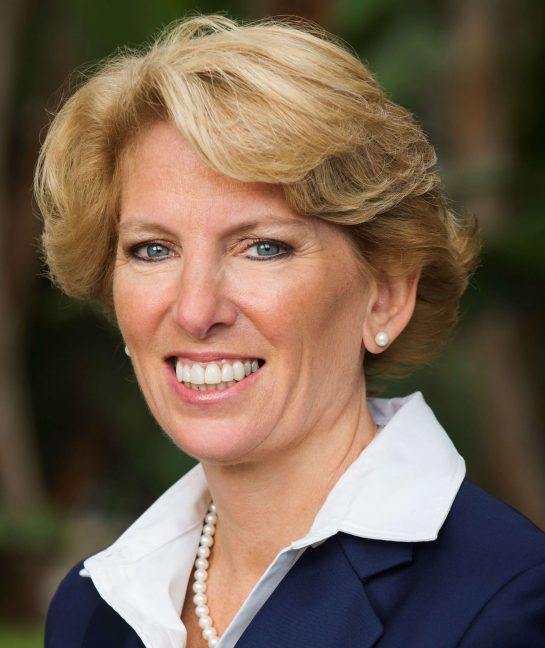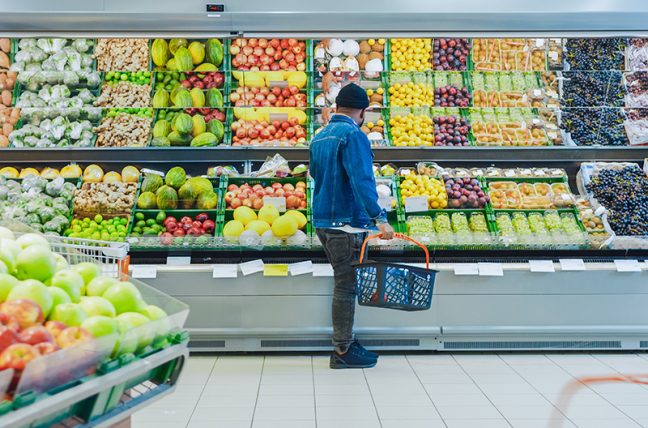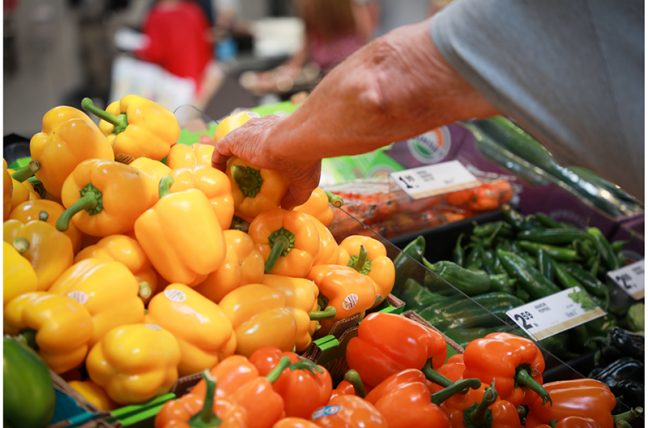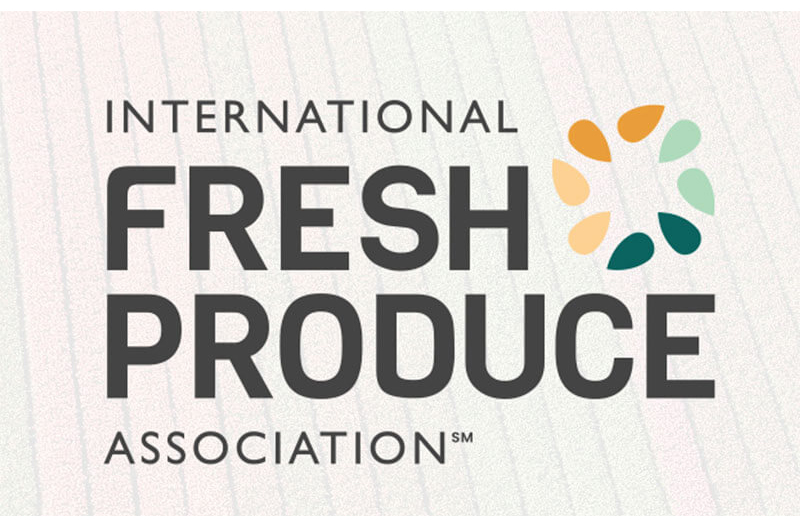The greatest challenge for the fresh produce and floral industry continues to be getting people to consume more of its products, according to Cathy Burns, CEO of the International Fresh Produce Association.
“If you look at the data, consumption of fresh fruits and vegetables remains well below both the U.S. Dietary Guidelines and the World Health Organization recommendations…one in 10 Americans are eating the recommended amount of fruit and vegetable servings a day. That means 90 percent are not.”

Burns said, on the global stage, recommended consumption of fresh fruits and vegetables is 400 grams daily, “and we’re around 260. It’s a huge gap, and therefore a huge opportunity for our industry to close that gap.”
She noted that fresh produce is the solution to many of the world’s diet-related diseases, with the U.S. spending about $1.4 trillion annually to treat these conditions.
“This is diet-related disease, driven by your diet. We feel strongly that what people are putting on the end of their fork could have a significant impact on the reduction of diet-related diseases. Our opportunity as an industry is to continue to ensure consumers see our great products as an essential pathway to healthier lives.”
Burns said the goal at IFPA is “to be at every table where food is being discussed, to ensure that our industry’s voice is heard.” That has not always been the case, but she noted that is changing.
“We’re either being invited to tables or inviting ourselves. That’s going to be important to ensure that our industry moves forward.”
Industry trends
Burns, who is preparing for the Global Produce and Floral Show that runs Oct. 19-21 in Anaheim, California, addressed some of the trends in the industry. She referred to a recent Circana (IRI) study that found nearly 70 percent of all consumers did something special for the Fourth of July weekend, and more than half had made special plans for Labor Day.
“That’s a very, very good sign for the back half of the year.”
Special meals seem to be central to both summer holidays. Burns said this underscores an opportunity for retailers to deliver on those memorable experiences and for foodservice operators to leverage that as well, as it relates to food away from home, specifically takeout.
A separate report found that quality and price are fundamental for consumers to buy fruits and vegetables. Factors such as locally grown, organic, sustainably grown and recyclable packaging also influence purchasing.
On the floral side, Burns said they have found that most purchases are planned as opposed to impulse buys. As floral is associated with improving mental well-being, along with being used to brighten homes during the COVID-19 pandemic, those purchases have become a habit for many.
“Universally, there is an opportunity for supermarkets to promote the quality of their floral products to increase everyday sales, as well as special occasion sales. Floral is no longer just a special occasion sale. It’s an everyday sale.”
Addressing climate change
While new technologies have been developed in the area of controlled environment agriculture, also known as vertical farming, several companies are experiencing financial difficulties or closing.
According to Burns, what is happening in that community is typical of a new market lifecycle. When one comes to life, there often is growth, with many new players and investment funding flowing in.

“Typically, what happens in the new market lifecycle, it’s followed by a period of contraction, either consolidation or people exit the business totally. So this is not unusual,” she explained.
“At the end of the day, profitability and survival will be determined by consumer acceptance of the products grown by these farmers and whether these companies can get their economic model to work.”
On a broader scale, Burns said the industry needs to address climate change. IFPA was awarded a $15 million grant from the USDA for its pilot project, “A Vibrant Future.” The project will incentivize growers of specialty crops to adopt climate-smart production in order to establish a consumer-driven, climate-smart market for fruits and vegetables grown using climate-smart practices.
“The opportunity there is to use this funding at the grower level to look for ways to be more efficient and effective and to ultimately address the changing climate. It’s happening everywhere, and that’s not going away. How we respond to that is going to be critical.”
Looking at new technologies also will be important, including but not limited to CEA.
“At this point, CEA is a very, very small component of overall farming around the world. I think it will be a component of it, but you’re going to need a variety of farming methods in order to meet demand.”
Ethnic produce more popular
As people have resumed international travel following the pandemic, they are discovering new cuisines and flavors. Burns said many want to relive those culinary memories after they return, so they seek out produce items to recreate the experience.
Also, as immigration grows and communities become more diverse, there is “often a corresponding desire for foods and brands [immigrants are] familiar with.”
Many of the cultures outside of the U.S. are dependent on fruits and vegetables, and there is an opportunity for the industry to capitalize on that.
“Grocers may need to continue to look to diversify their supply chain to accommodate these consumer trends, and ultimately the demand, so they can satisfy that, because people will continue to look for more and more variety as their palates expand,” Burns said.
She also noted that Millennials and Gen Z are experimental with food. As the world has grown smaller due to social media, they are discovering different foods and recipes that they are more apt to try.
Global conference
The association is gearing up for its 2023 Global Produce and Floral Show, which will be the second under the IFPA name.
Prior to 2022, it had been several years since the legacy PMA or United Fresh organizations had held a trade show or an annual meeting. Looking back at the 2022 Global Produce and Floral Show, Burns said it was “as much about our debut as an organization as it was about connecting with colleagues and friends who you may not have been able to otherwise see in person for a while. It really was a homecoming.”

At the 2022 show, people “came back with a vengeance, with a lot of hugs and handshakes and ready to do business.” Registration for the October show in Anaheim is strong, with Burns adding that IFPA recently held a record-breaking foodservice conference in Monterey, California.
“This once again validates to me that the industry wants to get together,” she said. “What’s great about the show is it’s the whole supply chain and the whole world under one roof. It’s a very efficient way for people to connect.”
Based on how IFPA events are setting attendance records this year, Burns encouraged advance registration for the show.
Highlights will include a strong emphasis on technology and innovation. Twelve companies have been chosen as Technology Accelerator participants. They will be in the Innovation Hub, a new feature on the expo floor. Other startups and new technologies and business solution providers also will be located there.
Burns said the show is known for innovation.
“I think you’re going to see that continue to expand this year, just based on what I’m already hearing in terms of people introducing new products, new product varieties, new technology. One of our biggest goals for the show is to be the single show for the whole industry to find solutions they need for their business.”
She encouraged members to take advantage of all the business solutions being in one place, and also to explore the various education opportunities offered.
According to Burns, health remains at the center of the conversation for the industry, including addressing the gap between what people are – and what they should be – consuming. As work continues in Washington, D.C., on the 2023 Farm Bill, she said this will be a good time for the industry to focus on action.
“That will be an important component of not only the show but coming out of the show and setting us up for a strong 2024.”
Read more produce news from The Shelby Report.

